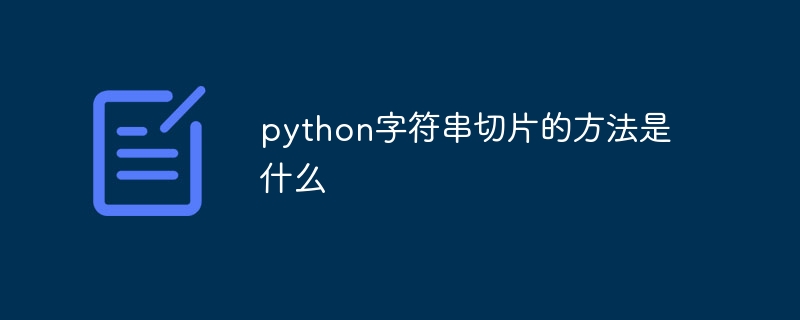 Backend Development
Backend Development Golang
Golang In-depth discussion of the impact of Golang slicing out of bounds and countermeasures
In-depth discussion of the impact of Golang slicing out of bounds and countermeasures
Slice in Golang is a flexible and convenient data structure that can be dynamically adjusted in size to facilitate data cutting and management. However, out-of-bounds slice access is a common programming error that can cause a program to crash or produce unexpected results. This article will delve into the impact of Golang slicing out of bounds and countermeasures, and provide specific code examples.
The impact of slice out-of-bounds
When we try to access an index in a slice that exceeds its length range, it will cause slice out-of-bounds. This may cause the following problems:
- Program crash: Slice out-of-bounds access may cause the program to crash and output an error message similar to "slice bounds out of range" on the console.
- Memory leak: In some cases, a slice may continue to use unexpected memory space after an out-of-bounds access, causing memory leak problems.
- Data corruption: Out-of-bounds access to slices may overwrite other memory areas, causing program data corruption.
Code example
The following is a simple example of slice out-of-bounds access:
package main
import "fmt"
func main() {
s := []int{1, 2, 3}
// Attempt to access index beyond slice length
fmt.Println(s[3])
}In the above code, we create an integer slice [1, 2, 3] with three elements and then try to access the element with index 3. Since the slice length is 3, accessing the element with index 3 will cause the slice to go out of bounds.
Countermeasures
To avoid slice out-of-bounds issues, follow these best practices:
- Check the boundaries: Before accessing the slice , always first check whether the index to be accessed is within the legal range.
-
Use built-in functions: Use built-in functions such as
lento get the length of the slice and avoid manually calculating the length. - Note to avoid modifying the length: When adding or removing elements via a slice, be sure to update the length of the slice to avoid going out of bounds.
- Be careful when passing slices: When passing slices between functions, make sure that the passed slices will not be modified inside the function and cause out-of-bounds.
Code Example
The following is a sample code that demonstrates how to avoid out-of-bounds access to slices:
package main
import "fmt"
func main() {
s := []int{1, 2, 3}
index := 3
if index < len(s) {
fmt.Println(s[index])
} else {
fmt.Println("Index out of range")
}
}In the above code example, we first check whether the index to be accessed is less than the length of the slice to ensure that out-of-bounds access is avoided before accessing the slice element.
Summary
Slicing is a commonly used data structure in Golang, but out-of-bounds access to slices may cause serious problems. By following best practices and paying attention to details, you can effectively avoid the problem of out-of-bounds slicing and ensure the stability and reliability of your code. I hope the content of this article can help readers better understand the impact of Golang slicing out of bounds and the countermeasures.
The above is the detailed content of In-depth discussion of the impact of Golang slicing out of bounds and countermeasures. For more information, please follow other related articles on the PHP Chinese website!
 使用sort.Reverse函数对切片进行反转排序Jul 24, 2023 pm 06:53 PM
使用sort.Reverse函数对切片进行反转排序Jul 24, 2023 pm 06:53 PM使用sort.Reverse函数对切片进行反转排序在Go语言中,切片是一个重要的数据结构,它可以动态地增加或减少元素数量。当我们需要对切片进行排序时,可以使用sort包提供的函数进行排序操作。其中,sort.Reverse函数可以帮助我们对切片进行反转排序。sort.Reverse函数是sort包中的一个函数,它接受一个sort.Interface接口类型的
 python字符串切片的方法是什么Dec 13, 2023 pm 04:17 PM
python字符串切片的方法是什么Dec 13, 2023 pm 04:17 PM在Python中,可以使用字符串切片来获取字符串中的子串。字符串切片的基本语法为“substring = string[start:end:step]”。
 视频切片授权什么意思Sep 27, 2023 pm 02:55 PM
视频切片授权什么意思Sep 27, 2023 pm 02:55 PM视频切片授权是指在视频服务中,将视频文件分割成多个小片段并进行授权的过程。这种授权方式能提供更好的视频流畅性、适应不同网络条件和设备,并保护视频内容的安全性。通过视频切片授权,用户可以更快地开始播放视频,减少等待和缓冲时间,视频切片授权可以根据网络条件和设备类型动态调整视频参数,提供最佳的播放效果,视频切片授权还有助于保护视频内容的安全性,防止未经授权的用户进行盗播和侵权行为。
 Python中的主要和次要提示Aug 25, 2023 pm 04:05 PM
Python中的主要和次要提示Aug 25, 2023 pm 04:05 PM简介主要和次要提示,要求用户输入命令并与解释器进行通信,使得这种交互模式成为可能。主要提示通常由>>>表示,表示Python已准备好接收输入并执行相应的代码。了解这些提示的作用和功能对于发挥Python的交互式编程能力至关重要。在本文中,我们将讨论Python中的主要和次要提示符,强调它们的重要性以及它们如何增强交互式编程体验。我们将研究它们的功能、格式选择以及在快速代码创建、实验和测试方面的优势。开发人员可以通过理解主要和次要提示符来使用Python的交互模式,从而改善他们的
 golang怎么修改切片的值Jan 05, 2023 pm 06:59 PM
golang怎么修改切片的值Jan 05, 2023 pm 06:59 PM修改方法:1、使用append()函数添加新值,语法“append(切片,值列表)”;2、使用append()函数删除元素,语法“append(a[:i], a[i+N:]...)”;3、直接根据索引重新赋值,语法“切片名[索引] = 新值”。
 go语言怎么从切片中删除元素Dec 20, 2022 am 10:55 AM
go语言怎么从切片中删除元素Dec 20, 2022 am 10:55 AM删除方法:1、对切片进行截取来删除指定元素,语法“append(a[:i], a[i+1:]...)”。2、创建一个新切片,将要删除的元素过滤掉后赋值给新切片。3、利用一个下标index,记录下一个有效元素应该在的位置;遍历所有元素,当遇到有效元素,将其移动到 index且index加一;最终index的位置就是所有有效元素的下一个位置,最后做一个截取即可。
 深入探讨Golang切片的内存分配和扩容策略Jan 24, 2024 am 10:46 AM
深入探讨Golang切片的内存分配和扩容策略Jan 24, 2024 am 10:46 AMGolang切片原理深入剖析:内存分配与扩容策略引言:切片是Golang中常用的数据类型之一,它提供了便捷的方式来操作连续的数据序列。在使用切片的过程中,了解其内部的内存分配与扩容策略对于提高程序的性能十分重要。在本文中,我们将深入剖析Golang切片的原理,并配以具体的代码示例。一、切片的内存结构和基本原理在Golang中,切片是对底层数组的一种引用类型,
 Golang切片越界问题解析Mar 19, 2024 pm 03:33 PM
Golang切片越界问题解析Mar 19, 2024 pm 03:33 PMGolang切片越界问题解析Golang是一门高效、简洁的编程语言,其中的切片(slice)作为一种重要的数据结构,在日常开发中经常被使用。然而,在使用切片的过程中,经常会遇到切片越界问题。本文将详细解析Golang中切片越界问题的原因以及如何避免这类问题,同时提供具体的代码示例进行说明。切片的基本概念在Golang中,切片是对数组的一个引用,它包含三个信息


Hot AI Tools

Undresser.AI Undress
AI-powered app for creating realistic nude photos

AI Clothes Remover
Online AI tool for removing clothes from photos.

Undress AI Tool
Undress images for free

Clothoff.io
AI clothes remover

AI Hentai Generator
Generate AI Hentai for free.

Hot Article

Hot Tools

Dreamweaver CS6
Visual web development tools

SecLists
SecLists is the ultimate security tester's companion. It is a collection of various types of lists that are frequently used during security assessments, all in one place. SecLists helps make security testing more efficient and productive by conveniently providing all the lists a security tester might need. List types include usernames, passwords, URLs, fuzzing payloads, sensitive data patterns, web shells, and more. The tester can simply pull this repository onto a new test machine and he will have access to every type of list he needs.

MantisBT
Mantis is an easy-to-deploy web-based defect tracking tool designed to aid in product defect tracking. It requires PHP, MySQL and a web server. Check out our demo and hosting services.

mPDF
mPDF is a PHP library that can generate PDF files from UTF-8 encoded HTML. The original author, Ian Back, wrote mPDF to output PDF files "on the fly" from his website and handle different languages. It is slower than original scripts like HTML2FPDF and produces larger files when using Unicode fonts, but supports CSS styles etc. and has a lot of enhancements. Supports almost all languages, including RTL (Arabic and Hebrew) and CJK (Chinese, Japanese and Korean). Supports nested block-level elements (such as P, DIV),

ZendStudio 13.5.1 Mac
Powerful PHP integrated development environment






